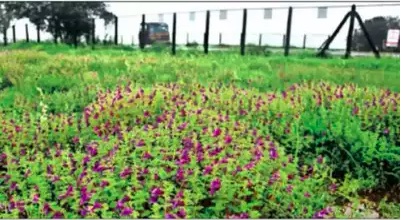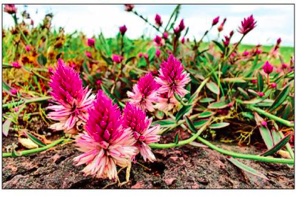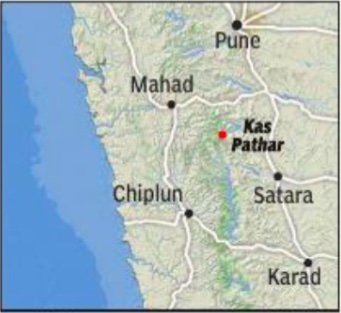Kas pathar
(→Blooming of wildflowers) |
m (Jyoti moved page Kas plateau to Kas pathar without leaving a redirect) |
Latest revision as of 07:07, 15 October 2022
This is a collection of articles archived for the excellence of their content. |
[edit] Blooming of wildflowers
Rahul Gayakwad, Oct 2, 2022: The Times of India

From: Rahul Gayakwad, Oct 2, 2022: The Times of India

From: Rahul Gayakwad, Oct 2, 2022: The Times of India

From: Rahul Gayakwad, Oct 2, 2022: The Times of India
Every visitor to Kas Pathar, where wildflowers bloom for a short two-month season, is struck by its Wordsworthian beauty. Just as the monsoon’s fury abates in September, small flowers cover this plateau in the Western Ghats, 26km from Satara in Maharashtra. The plateau spanning 1,800 hectares is home to at least 450 flowering plant species. This year, it opened for visitors on September 10, but the flower blanket isn’t as thick as it used to be a decade ago.
The whole plateau was fenced off in 2012 at Unesco’s suggestion to stop tourists from trampling the blooms, but the fence stops grazing animals too, and hampers pollination, leaving large portions of the plateau barren. That’s why environmentalists want the fence to go. They say other restrictions can be placed on people’s movement.
Let Them Bloom
Wildlife warden Sunil Bhoite has observed fewer flowers blooming on the plateau for the past six or seven years. “Earlier, grazing cattle pulled out and ate the grass and shrubs. Since the fence was put up, we see more invasive species and much less of the original flowers,” he said. Environment researcher Umakant Chavan said cattle add manure to the soil and their plodding turns it over. They help in seed dispersion and pollinate a large area. “Humans must not be allowed at all on the plateau, but animals must be allowed to graze here for conservation. Flowerbeds are decreasing every year so the forest department must take steps, even ban tourism, to save the plateau. ”
A Thing Of Beauty
Sunny yellow, bright pink, purple, white, mauve and blue blooms in green meadows carpet Kas’s natural flowerbeds. Every 15-20 days the plateau changes colour according to the flowers in bloom. Together with the fogcovered hills, misty rain anda steady breeze, the blooms make Kas a paradise.
The Kas Plateau Executive Committee comprises representatives of six villages and works to safeguard its natural heritage. Over 150 volunteers keep a watchful eye over visitors. Its vice-president Dattatray Kirdat said extended rains have delayed floweringby 10 days, compared with the last decade. “We now expect a full bloom in the first week of October which will last for 15 days,” he added. Srirang Shinde, retired forest ranger and tourist guide, said there are more than 450 varieties of flowering plants over the plateau, of which 39 are found only on Kas.
“This year the orchids have started blooming and can be seen for three to four weeks. Many well-wishers want the fencing removed, but then people will trample all over the plateau, which is so fragile that it will turn into rocky ground and no flowers will be seen. The flowering depends on nature’s cycle andevery step to conserve this natural beauty is necessary. ”
Threat From Litterbugs
At least 600 visitors troop in on weekdays while 3,000 arrive on weekends. This season, many are disappointed by the sight of fewer flowers. Meghna Joshi from Aurangabad said, “If Kas is expected to come alive only in October, the committee should have declared so. We have come across hardly four or five flowering species because it is raining and it is still foggy. ”
Jamie Pyne, a UK tourist, was impressed by the landscape near Yewateshwar hill, enroute to Kas. “All this natural beauty should be conserved. . . . We have already come across flowerbeds of tiny yellow and pink flowers and it is mesmerising. ”
Datta Jagtap, an environment researcher from Satara, said unmindful visitors spoil Kas’s magic. “They litter the plateau. Although the Kas plateau management committee has deployed around 150 volunteers, tourists throw a lot of plastic. They should know they are destroying something incredibly rare. ”